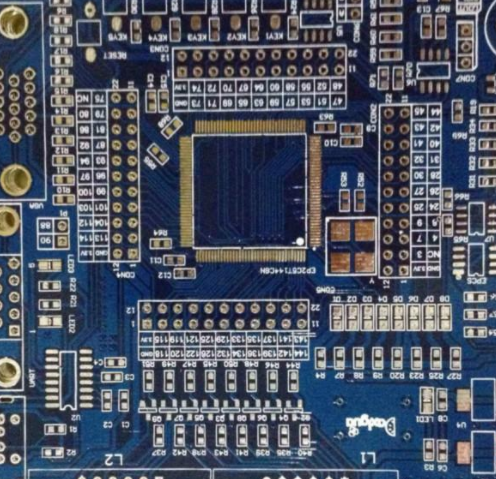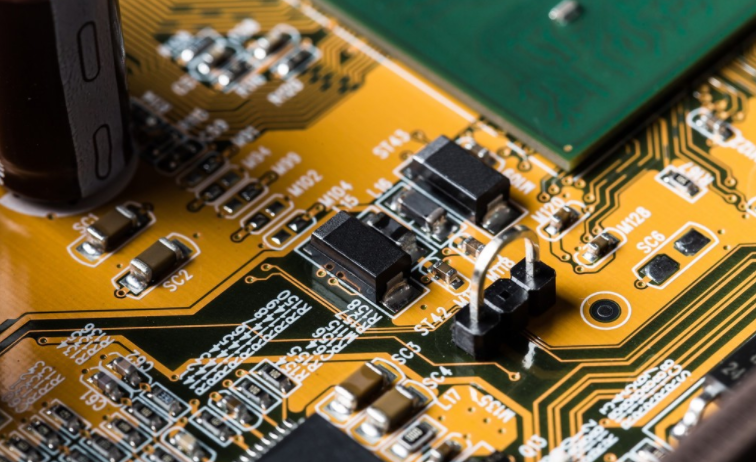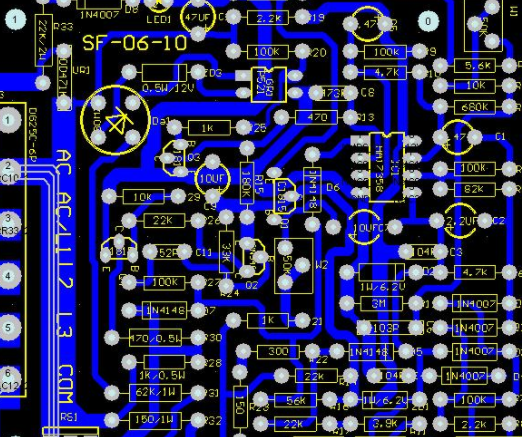
PCB "Automation equipment+industrial robot operation"
PCB work is technology intensive and capital intensive, but it is still labor intensive Many automatIC devices require manual operation and assembly line operation A medium-sized PCB company has thousands of employees PCB manufacturers are facing more and more severe challenges in undertaking industrial transfer and promotion, the implementation of the new labor contract law, the increase in urban living costs brought about by changes in economic structure, and the difficulties and mobility of post 8.0 and post 90 employees The challenges of labor shortage and rising labor costs, and the impact on production plans, product quality, and profitability At the same time, with the progress of robot functions and the decline of prices, replacing the traditional "automation equipment+manual operation" circuit board production method with "automation equipment+industrial robot operation" will become the trend of PCB work transformation
Typical use cases for robots
1. Six axis multi joint robot is used in AOI detection process
Traditional AOI scanners rely on manual loading, steering and unloading One person guards two machines and repeats monotonous actions every day In addition, the newly manufactured circuit board will also EMIt a pungent SMEll to the human body Cause some damage. The infrared light emitted by AOI scanner is also an invisible killer We use a six axis multi joint robot instead of workers to handle the load, flip and unload the two AOIs Each shift can end more than 700 PCB hardboards, and the summarized power can reach 1 min (in the mean Including AOI machine scan time)
Circuit board

If the loading and unloading transportation line matched with the expansion board machine can be further connected to the AGV for fixed line transfer, the up and down process of full-automatic circuit board production can be completed
2. SCARA robot is used for circuit board coil inspection process
At present, there are only a handful of test equipment used for short circuit detection of multilayer coils on the MARKet. Most of the testing equipment is manual. Manually place the PCB with large aperture on the test equipment, and then open it for testing. PCB boards with SMAll holes need to manually hold the device (probe) to test each coil. We can use the SCARA robot to complete the loading and unloading and positioning of the cooperative inspection equipment, and complete the one-time inspection of all coils of the large aperture plate; For small aperture plates, we use SCARA equipment to perform end fixed probe and visual positioning, and use the probe to detect each coil. Our equipment also effectively avoids error detection caused by small or large coil diameter during manual operation. Compared with manual operation, it can be moved obviously to detect and measure power, avoiding quality problems caused by missing inspection.
3. DELTA robot is used for the packaging process of Small circuit board products
For circuit board production, manually pick up the existing FPC trays one by one and place them in the blister tray. Since the FPC is soft and thin, it is inconvenient to pick up, and the power will be greatly reduced. The Delta800 plus a set of vision system can select the qualified ones from the MESsy FPC stack, and then place them in the blister tray as required, which is no less than manual operation. Its speed can reach 60 pieces per minute, which can completely replace manual sorting and loading.
The advantages of industrial robots working on PCB rather than manually producing PCB are the same as those of automobile manufacturing and other manufacturing industries. Industrial robots work on PCB instead of manual labor, which brings many advantages to enterprises.
1. Reduce labor force, speed up work cycle and mobilize work motivation. The robot can perform high-speed repetitive operations with much higher work cycle than manual operation, thus greatly improving the work power and reducing the labor cost and processing cost.
2. Accuracy of traveling work and quality of traveling products. The robot can use programming and vision systems to achieve accurate positioning and repeatability, and effectively improve product quality.
3. Avoid potential threats to workers' health and safety from the working environment, and save investment in environmental safety.
4. Reduce the power and quality decline and accident rate caused by repetitive and monotonous process of worker conditions.
5. Optimize workflow and reduce workspace.
6. Effectively reduce the data consumption rate.
7. It can work continuously for 24 hours in a dark environment.
8. It can make the manufacturing process flexible. In the future, PCB work will show more and more small batch orders. The use of industrial robots can greatly improve the flexibility of production and complete the rapid delivery of orders.
9. Improve brand image and commitment. The use of industrial robots enables PCB manufacturers to further improve their automation level, promote the improvement of product quality, production capacity, cost control and responsiveness, and improve the overall competitiveness of manufacturers in the field of work.
Application PrOSPect of Industrial Robot in PCB Work
At present, the application of industrial robots in PCB work is still in its infancy, and there are still many problems to be solved. Many working lines of PCB are non-standard products. During the use of robots, they must be constrained by the existing workspace and original equipment capabilities. Facing the influence of different PCB data elements, it is necessary to consider the use of various sensors. The intellectualization of the traveling robot must also consider training a group of employees who can operate and maintain the robot for the manufacturer.
The application of industrial robots in PCB work in the future will show the following trends:
1. From single station or single line application to multi line application. It is difficult for existing PCB companies to completely introduce robots to complete automatic production, and they need to invest a lot of money for transformation, but they can carry out step-by-step transformation on qualified single stations and single lines, and gradually expand the application plan after achieving significant results.
2. From the application of SIMple robots to the combination with AGV and other smart devices. The material transfer between existing production lines is mostly manual operation, and the orderly transfer of finished materials can be distributed and realized through the combination of robots and AGVs.
3. The existing PCB factories are mainly used for some applications. The construction of new factories will be planned as a whole, and the applications of robots and automatic guided vehicles will be imported directly
4. The combination of industrial robots and the Internet of Things will make the manufacturing process more intelligent and flexible.
然后
联系
电话热线
13410863085Q Q

微信

- 邮箱











